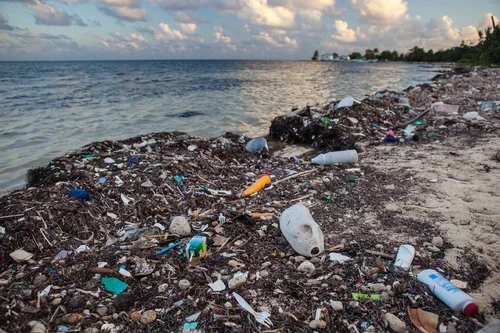PHARMACEUTICAL WASTE
Lack of free, convenient programs for proper disposal of unneeded or expired consumer prescription drugs and accessories contributes to water pollution, illicit drug use, drug addiction, and threats to sanitation workers.
Consumers lacking drug disposal programs in their communities often flush old drugs down the drain or toilet, contributing to water pollution. Numerous studies have found detectable levels of pharmaceuticals in surface and groundwater drinking water sources. Water treatment plants are not equipped to remove such medicines. The U.S. Environmental Protection Agency advises consumers not to flush prescription drugs, but to return medications to a disposal or take back program.
Background
In 2013, overdoses from prescription pain medications killed more than 16,000 Americans. President Obama says most young people who begin misusing prescription drugs get them from the medicine cabinet. Lack of convenient disposal programs for prescription drugs has been linked to poisoning of children and pets; misuse by teenagers and adults; and seniors accidentally taking the wrong medicine. About 3 billion needles are used in U.S. homes annually to deliver medication; their improper disposal leads to needles washing up on beaches and threats to sanitation workers handling waste with used needles.
Most U.S. communities lack free, convenient, on-going collection programs that could help alleviate these critical problems. The Drug Enforcement Administration has partnered with state and local law enforcement agencies to hold periodic National Take-Back Days for medicines, collecting and disposing of more than 5.5 million pounds of medications in just ten events. But far more convenient and ongoing collection services are needed. The National Drug Control Strategy report calls for establishment of long-term, sustainable disposal programs in communities.
The pharmaceutical industry recently failed in an attempt to avoid financial responsibility when the Supreme Court let a lower ruling stand that rejected the industry contention that requiring drug makers to pay for take back was unconstitutional. Now companies need to step up and provide financing for a national network of drug take back.
We believe manufacturers who place drugs on the market should be responsible for financing systems that provides for free and convenient take back nationwide. We have initiated dialogues and will be filing shareholder proposals on this issue for 2016 at three major U.S. drug makers: AbbVie, Johnson & Johnson and Merck & Co.
While the industry should be working to develop a national takeback program, in the interim, individual companies can make a difference. A prime example: In February 2016, Walgreens, the largest U.S. pharmacy chain, announced it will install drug disposal kiosks in 500 drugstores in 39 states and Washington, D.C. as part of a broader effort to counter drug abuse. Walgreens emphasized that “prescription drug abuse continues to be a public health and safety risk” and said kiosks would address a key contributor to the drug abuse crisis. Richard Ashworth, Walgreens president of pharmacy and retail operations, further stated: “We understand the challenges our communities face, and we stand ready to help our patients and customers lead healthier lives. When the stakes are this high, the solutions must be comprehensive.” Walgreens’ statement effectively rebuts assertions by drug manufacturers that simply encouraging consumers to place unused drugs in the trash is an adequate disposal method.







